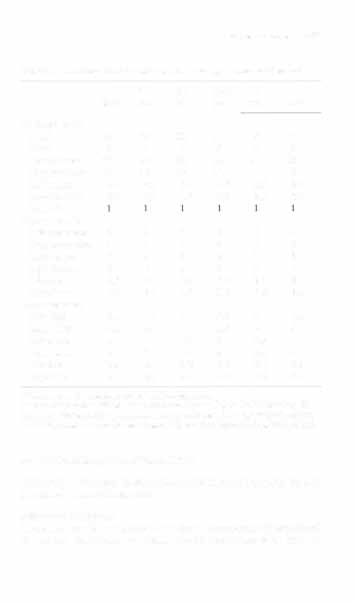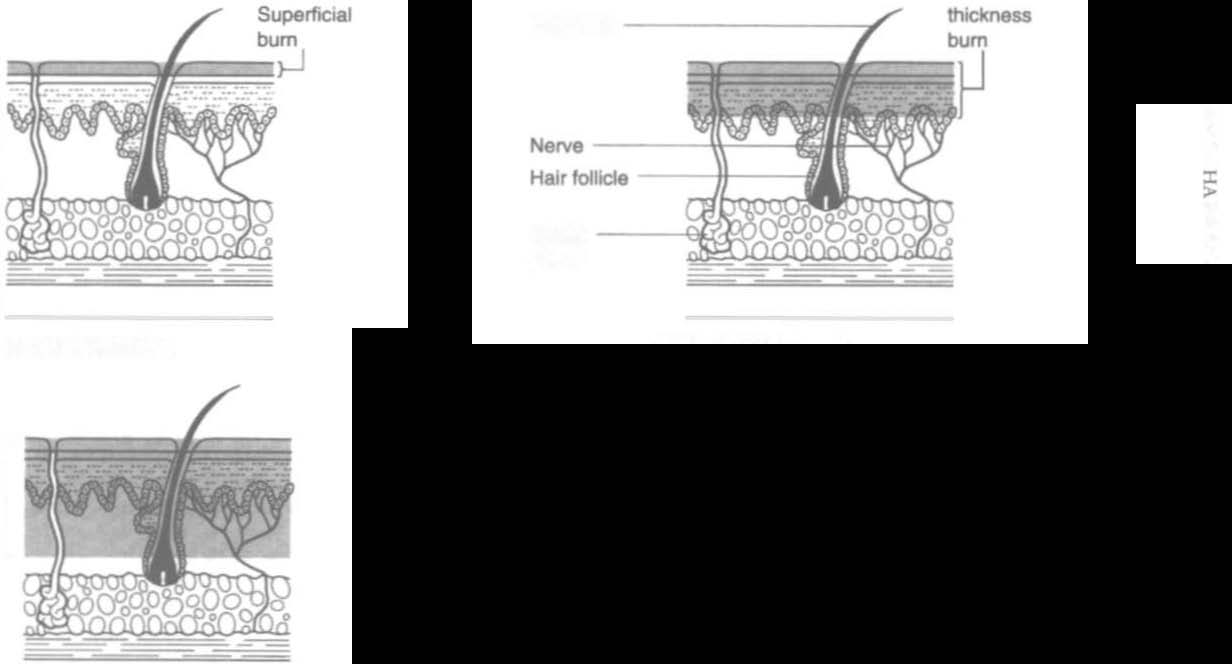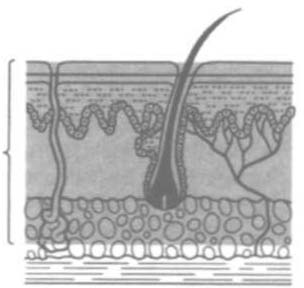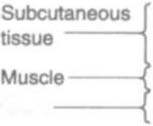i bc27f85be50b71b1 (137 page)
Read i bc27f85be50b71b1 Online
Authors: Unknown
446 AClJT£ CARE HANDBOOK FOR PHYSICAL THERAPISTS
formula is quick and easy to use, especially when a rapid initial estimation of TBSA is needed in the field or the emergency room. To use the rule of nines, the area of burn is filled in on the diagram, and the
percentages are added for a TBSA. Modifications can be made if an
entire body section is not burned. For example, if only the posterior
left arm is burned, the TBSA is 4.5%.
Lund and Browder Formllia
Table 7-4 describes the Lund and Browder formula. The body is
divided into 19 sections, and each is assigned a different percentage of TBSA. These percentages vary with age from infant to adult to accommodate for relative changes in TBSA with normal growth.
The Lund and Browder formula is a more accurate predictor of
TBSA than the rule of nines because of the inclusion of a greater
number of body divisions along with the adjustments for age and
normal growth.
Estimating the Extent of Irreglliarly Shaped Bllms
It is important to note that using the rule of nines or the Lund and
Browder formula may not be accurate for irregularly shaped
burns. To estimate TBSA with irregularly shaped burns, the
patient's palm is used to measure the shape of the burn. The palm
represents 1 % TBSA.'2
Assessing the Depth of a Burn
The depth of a burn can be described as superficial, moderate partial
thickness, deep partial thickness, or full thickness (Figure 7-5). Each
type has its own appearance, sensation, healing time, and level of
pain, as described in Table 7-5. The assessment of burn depth allows
an estimation of the proper type of burn care or surgery and the
expected functional outcome and cosmesis." Although clinical
observation remains the standard for burn depth estimation, there is
often error or underestimation. Experimental technologies for morc
precise burn depth estimation include cell biopsy, vital dyes, fluorescein fluorometry, laser Doppler flowmetry, thermography, ultrasound, and nuclear magnetic rcsonance.4
A burn wound is considered to be a dynamic wound in that it can
normally change in appearance, especially during the first few days. A
partial-thickness burn can convert to a full-thickness burn from infection, inadequate fluid resuscitation, or excessive pressure from dressings or spiints,I4



BURNS AND WOUNDS 447
Table 7-4. Lund and Browder Method of Assessing the Extenr of Burns'"
'1-4
5-9
10-14 15
Birth
yrs
yrs
yrs
yrs
Adult
Head and trunk
Head
19
17
13
1 I
9
7
Neck
2
2
2
2
2
2
Anrerior trunk
13
13
13
13
'13
13
Posterior trunk
13
13
13
13
13
13
Left butrock
2.5
2.5
2.5
2.5
2.5
2.5
Right burrock
2.5
2.5
2.5
2.5
2.5
2.5
Genitalia
Upper extremity
Left upper arm
4
4
4
4
4
4
Right upper arm
4
4
4
4
4
4
Left forearm
3
3
3
3
3
3
Right forearm
3
3
3
3
3
3
Lef, hand
2.5
2.5
2.5
2.5
2.5
2.5
Righ' hand
2.5
2.5
2.5
2.5
2.5
2.5
Lower extremity
Left thigh
5.5
6.5
8
8.5
9
9.5
Right thigh
5.5
6.5
8
8.5
9
9.5
Left lower leg
5
5
5.5
6
6.5
7
Right lower leg
5
5
5.5
6
6.5
7
Lef, foo,
3.5
3.5
3.5
3.5
3.5
3.5
Right foot
3.5
3.5
3.5
3.5
3.5
3.5
·Values represent percentage of rota I body surface area.
Sources: Adapted from WF McManus, BA Pmin. Thermal Injuries. In DV Feliciano, EE
Moore, KL Matrox (cds), Trauma. Stamford, Cf: Appleton & Lange, 1996;941; and CC
Lund, NC Browder. The estimation of areas of bums. Surg Gynecol Obstct 1944;79:355.
Act/Ie Care Ma/wgemenl of Bt/rn In;t/ry
This scction discusses the admission guidelines and resuscitative and
reparative phases of burn carc.
Admission Guidelines
In addition to the burn's extent and depth, the presence of associated
pulmonary, orthopedic, or visual injuries determines what level of





